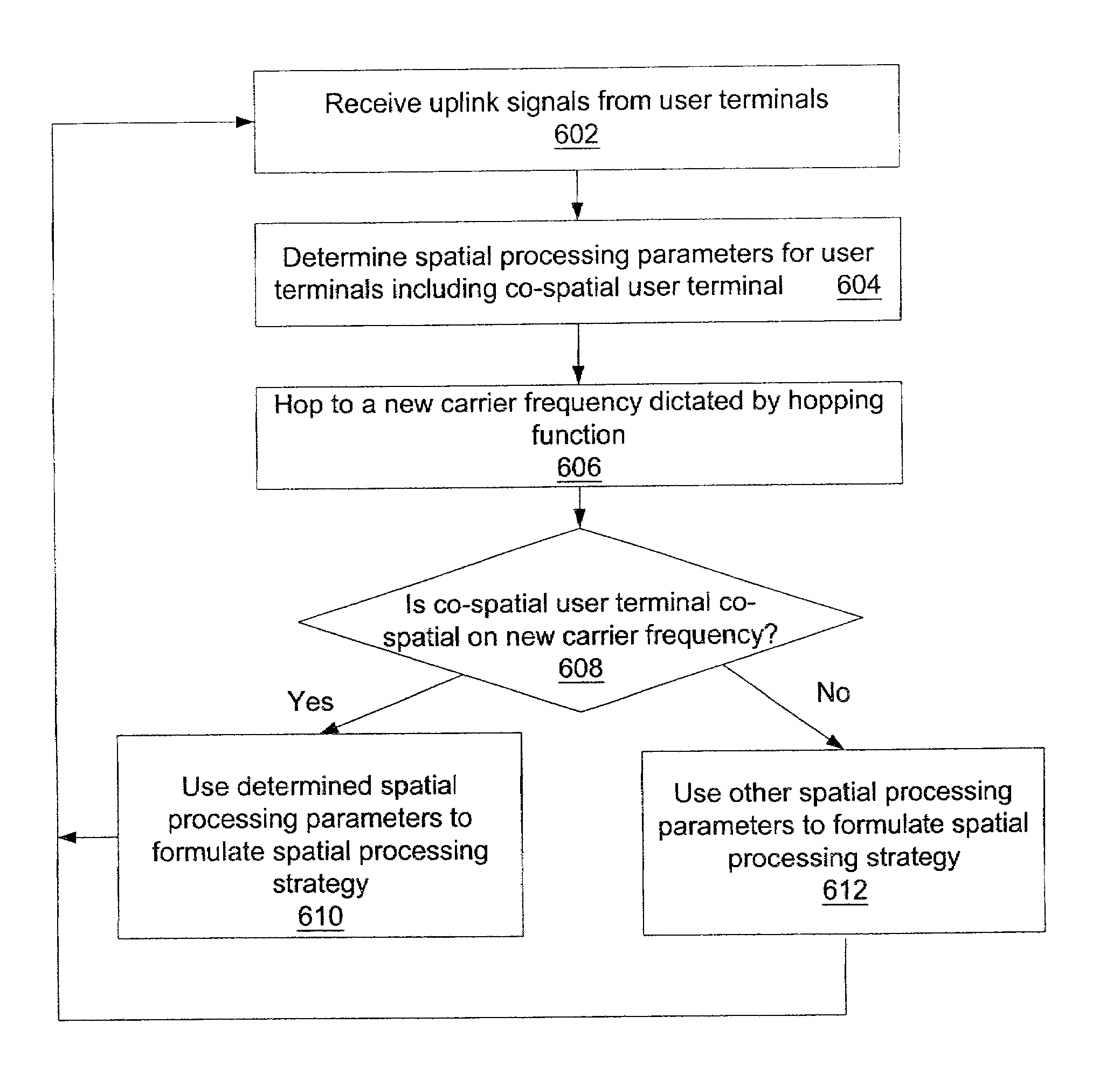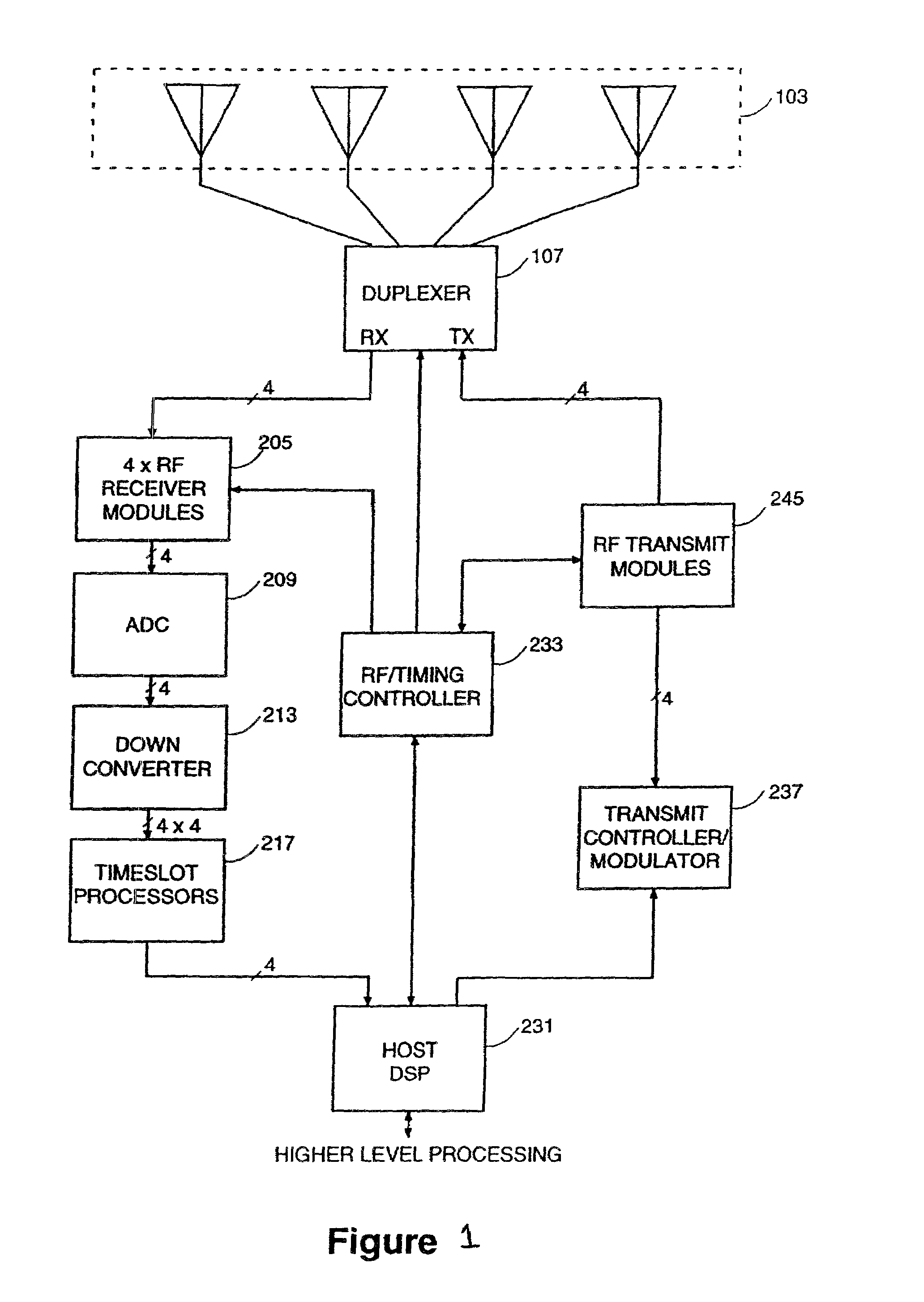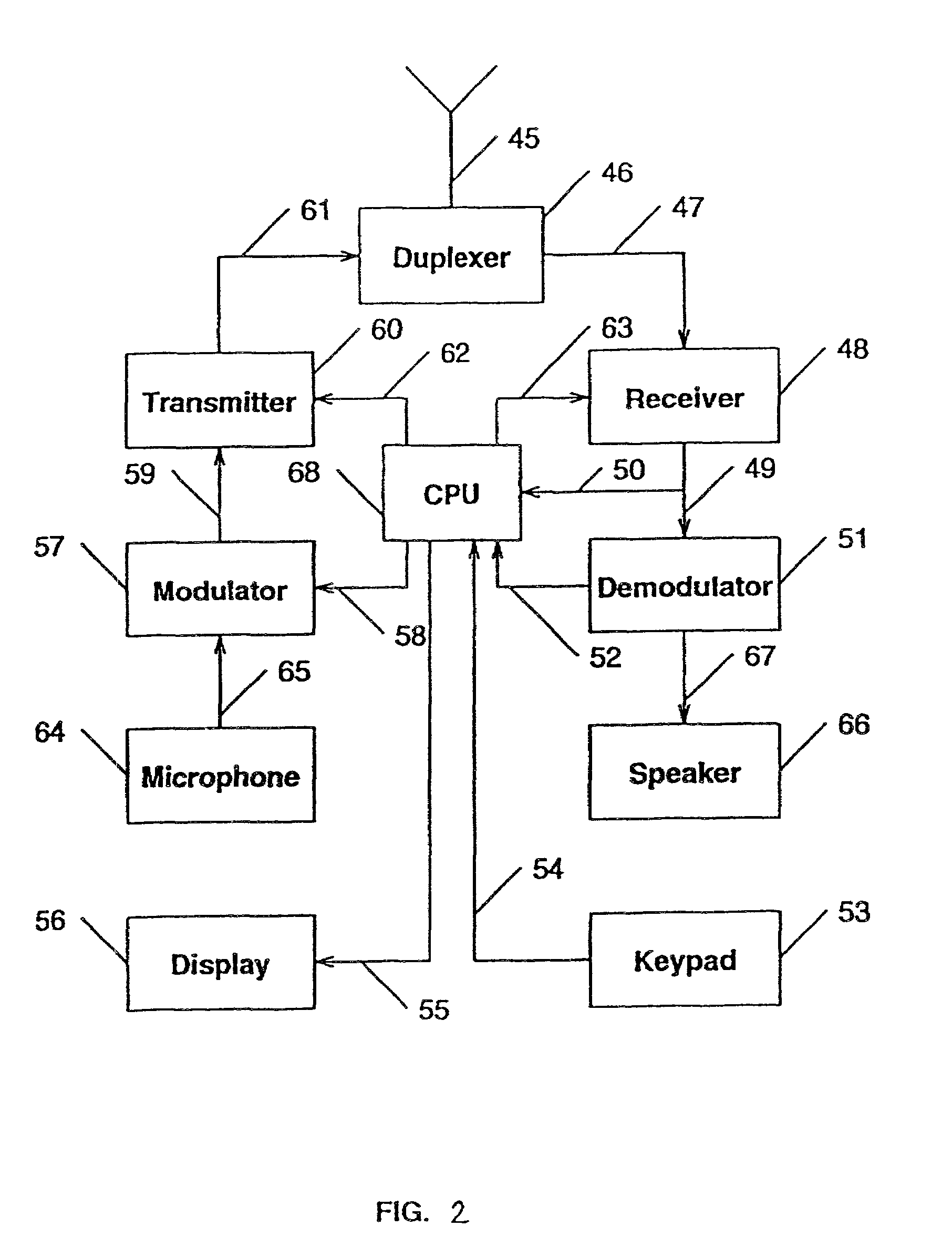Coordinated hopping in wireless networks using adaptive antenna arrays
a wireless network and adaptive antenna technology, applied in the field of wireless communication systems using adaptive antenna arrays, can solve the problems of destructively interfering at certain spatial locations, null or null placement may not eliminate all interference experienced by co-spatial users, and it is difficult or impossible to execute a spatial processing strategy
- Summary
- Abstract
- Description
- Claims
- Application Information
AI Technical Summary
Problems solved by technology
Method used
Image
Examples
Embodiment Construction
[0021]Base Station Structure
[0022]The present invention relates to wireless communication systems and may be a fixed-access or mobile-access wireless network using spatial division multiple access (SDMA) technology in combination with multiple access systems, such as time division multiple access (TDMA), frequency division multiple access (FDMA) and code division multiple access (CDMA). Multiple access can be combined with frequency division duplexing (FDD) or time division duplexing (TDD). FIG. 1 shows an example of a base station of a wireless communications system or network suitable for implementing the present invention. The system or network includes a number of subscriber stations, also referred to as remote terminals or user terminals, such as that shown in FIG. 2. The base station may be connected to a wide area network (WAN) through its host DSP 231 for providing any required data services and connections external to the immediate wireless system. To support spatial divers...
PUM
 Login to View More
Login to View More Abstract
Description
Claims
Application Information
 Login to View More
Login to View More - R&D
- Intellectual Property
- Life Sciences
- Materials
- Tech Scout
- Unparalleled Data Quality
- Higher Quality Content
- 60% Fewer Hallucinations
Browse by: Latest US Patents, China's latest patents, Technical Efficacy Thesaurus, Application Domain, Technology Topic, Popular Technical Reports.
© 2025 PatSnap. All rights reserved.Legal|Privacy policy|Modern Slavery Act Transparency Statement|Sitemap|About US| Contact US: help@patsnap.com



